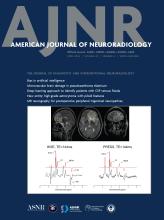This article requires a subscription to view the full text. If you have a subscription you may use the login form below to view the article. Access to this article can also be purchased.
Abstract
BACKGROUND AND PURPOSE: Amyotrophic lateral sclerosis (ALS) is a neurodegenerative disease involving rapid motor neuron degeneration leading to brain, primarily precentral, atrophy. Neurofilament light chains are a robust prognostic biomarker highly specific to ALS, yet associations between neurofilament light chains and MR imaging outcomes are not well-understood. We investigated the role of neurofilament light chains as mediators among neuroradiologic assessments, precentral neurodegeneration, and disability in ALS.
MATERIALS AND METHODS: We retrospectively analyzed a prospective cohort of 29 patients with ALS (mean age, 56 [SD, 12] years; 18 men) and 36 controls (mean age, 49 [SD, 11] years; 18 men). Patients underwent 3T (n = 19) or 7T (n = 10) MR imaging, serum (n = 23) and CSF (n = 15) neurofilament light chains, and clinical (n = 29) and electrophysiologic (n = 27) assessments. The control group had equivalent 3T (n = 25) or 7T (n = 11) MR imaging. Two trained neuroradiologists performed blinded qualitative assessments of MR imaging anomalies (n = 29 patients, n = 36 controls). Associations between precentral cortical thickness and neurofilament light chains and clinical and electrophysiologic data were analyzed.
RESULTS: We observed extensive cortical thinning in patients compared with controls. MR imaging analyses showed significant associations between precentral cortical thickness and bulbar or arm impairment following distributions corresponding to the motor homunculus. Finally, uncorrected results showed positive interactions among precentral cortical thickness, serum neurofilament light chains, and electrophysiologic outcomes. Qualitative MR imaging anomalies including global atrophy (P = .003) and FLAIR corticospinal tract hypersignal anomalies (P = .033), correlated positively with serum neurofilament light chains.
CONCLUSIONS: Serum neurofilament light chains may be an important mediator between clinical symptoms and neuronal loss according to cortical thickness. Furthermore, MR imaging anomalies might have underestimated prognostic value because they seem to indicate higher serum neurofilament light chain levels.
ABBREVIATIONS:
- ALS
- amyotrophic lateral sclerosis
- ALSFRS-R
- revised ALS Functional Rating Scale
- CMAP
- compound muscle action potential
- CST
- corticospinal tract
- GLM
- general linear model
- LMN
- lower motor neuron
- MEP
- motor-evoked potential
- MNI
- Montreal Neurological Institute
- NfL
- neurofilament light chains
- TMS
- transcranial magnetic stimulation
- UMN
- upper motor neuron
- © 2024 by American Journal of Neuroradiology











